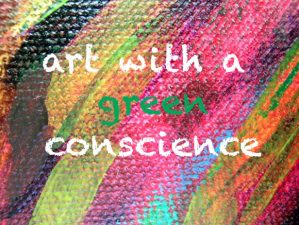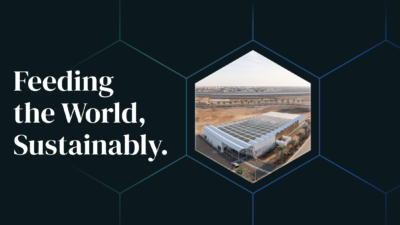 An archaic Saudia Arabian practice of trapping parrot fish in the Red Sea has to stop.
An archaic Saudia Arabian practice of trapping parrot fish in the Red Sea has to stop.
The Red Sea and the Gulf of Aden are a beautiful haven of marine and coastal biodiversity, created as a result of deep ocean rifting which began 70 million years ago and saw the separation of the Arabian plate from the African plate. Fortunately there is some movement amongst conservation biologists to protect this bioregion through the expansion of a carefully selected network of marine protected areas. Furthermore, legal frameworks such as the Jeddah Convention aim to establish a legally binding agreement which expresses the commitment and political will of parties (Djibouti, Yemen, Sudan, Saudi Arabia, Somalia, Egypt and Jordan) to tackle marine and coastal environmental issues through joint coordinated activities.
The basis for action is there, and so is the political will (at least on paper), nevertheless, several obstacles such as limited technical capacity, lack of data and scientific knowledge and limited funds make the process of formalizing agreements much harder. One other issue is tackling culturally sensitive practices.
On the Farasan Islands in Saudi Arabia, ‘The Harid’ festival celebrates the migration of Longnose Parrot fish, Hipposcarus harid, which arrive each year during springtime in a specific spot in the island to spawn. The celebration involves mass harvesting of the spawning parrot fish, where a group of men trap the fish by running them into the net.
Although this ancient practice may have made sense in the past when the Red sea was still a healthy ecosystem and able to recover from such “shocks”; nowadays we can no longer afford these practices – with all due respect to culture and tradition.
Sadly it seems like Saudi Arabia has no intention of stopping this.
Amusingly, after describing other forms of traditional artisanal fishing practices of the Farasan Island, the Saudi Tourism website states : “To celebrate this environmentally friendly and sustainable industry, The Parrot Fishing Contest (Harid festival) is held once a year.”
This is rather contradictory; you celebrate environmentally friendly and sustainable fishing practices by massacring thousands of parrot fish in three days? This is neither environmentally friendly nor sustainable.
This disturbing video shows the harid festival in action. It was obviously intended for promotional purposes and not to create awareness of the issue.
[youtube]http://www.youtube.com/watch?v=WMtH_FFX9iw&feature=related[/youtube]
I personally believe this practice should end, and my reasons are as follows:
As I discovered through William Gladstone’s research on the annual aggregations of parrot fish on the Farasan Islands, this phenomenon is truly fascinating, unique and unusual.
The aggregation does not consistently occur in the same month each year. In fact aggregations occurs in March for three years; then in the next year, it occurs in April; and then for the following three years, the fish aggregate again in March. This pattern corrects for differences in the lunar and solar calendars. The aggregations are part of an annual migration where the longnose parrot fish migrate from the entrance of the Red Sea to the Saudi coastline, north of Jeddah.
Their route takes them through the Farasan Islands; however, as the migration passes between the two largest islands of Farasan and Saqid, some of the fish take the wrong direction and become trapped in the semi enclosed bay of Kharij As Sailah.
Those not trapped and harvested continue the migration, arriving on the coastline near Jizan about one week after the aggregation finishes at Farasan Island. Mass harvesting of parrot fish at Farasan Island prevents these fish to populate other areas further north which could disrupt trophic balances elsewhere.
Another interesting phenomenon is that a specific and unique signal each year indicates the aggregations are imminent: the fish-like smell which local fishermen believe is the “smell of the harid” is actually the smell of the coral spawn produced on the first evening after the full moon and which is closely followed by the arrival of the parrot fish.
Although I did not find information on the motive for this, surely this serendipitous chain of events led by lunar and solar cycles means something important for both the corals and the parrot fish. In any case parrot fish are key for the health of coral reefs, their feeding activity prevents algae from choking the corals and is important for the production and distribution of coral sands in the reef biome. Consider that one parrotfish can produce 90 kg of sand each year.
I understand that facing cultural practices is not easy, however scientific research can help create awareness of the importance of the processes described above to legitimize banning or restricting such traditions. Farasan Island is extremely important to animals due to the presence of dugongs and endemic fish and corals; hopefully a compromise can be reached whereby the Harid festival can be practiced once every three yeas, for example.
On a side note: fellow greenprophet readers , it angers me to see numerous videos posted on youtube by macho youngsters spear fishing and displaying their catch victoriously – not even for food or income, but just for fun. How can this type of behavior be stopped?
Click to see these videos here, if you are interested:
Spearfish in the Red Sea
Spearfish barracuda in the Red Sea
Mother shark killed with her 15 offsprings
Image of parrot fish from Shutterstock




Every year, between the end of march and the beginning of april thousands of parrot fish comes to shallow water in a strange phenomena to commit suicide !! or is it just a gift from god ? this been happening for centuries, No one really can tell when did it start, If the people did not catch the fish, the fish will die,simply due to sea Intertidal, It’s one day event and the residents can tell wich day by the strong smell comes from the sea the night before, that smell comes from the Coral reefs wich could be the reason behind all of this.